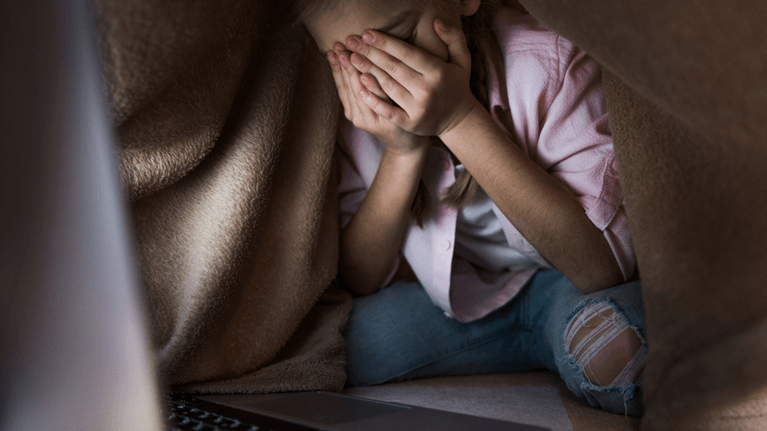How to Prevent Bullying - A Parent's Guide
What you can do as a parent to identify the signs of bullying and support your kids
By Becky Ward
Oct 23, 2023
iStock
Throughout the years, bullying has gone from schoolyard conflicts to online quarrels. The modern menace of cyberbullying knows no boundaries—it infiltrates the safe spaces of our children’s lives, reaching them through social media platforms and text messages, leaving behind emotional scars that can last a lifetime.
For the students enduring bullying, the consequences are devastating. Beyond the emotional turmoil, bullying can lead to severe psychological distress, affecting self-esteem and confidence. It brings a sense of isolation, making students reluctant to attend school or participate in social activities. Academic performance often suffers, creating a cycle of frustration and hopelessness.
In the face of such challenges, parents and caregivers play a pivotal role in being the first line of defense. Fostering open communication, educating the family about the consequences of bullying and staying informed about the evolving digital landscape can create a stronghold against this issue.
Below are details and tips on how parents can look for the signs of bullying and how best to support their students.
Learn about the different forms of bullying
When people think about bullying, images of students being teased or physically taunted at school often come to mind. Traditional forms of bullying, commonly associated with school environments, encompass a range of hurtful behaviors that can deeply impact a child's well-being. These forms of bullying often involve repeated acts of aggression, intimidation, or humiliation.
While these traditional forms of bullying still need to be taken seriously, they are not the only form of bullying in today’s world. Using social media platforms and text messages to harass another person – known as cyberbullying – is now a common avenue for bullying to take place. Any form of harassment, especially verbal insults, can be extremely harmful to a child’s self-esteem and should be taken very seriously.

Notice changes in their behavior
Some major signs that your child might be getting bullied are sudden mood swings, emotional withdrawal and changes in their online activity. These emotional shifts can be seen as pain or distress and should encourage you to check in on your child and support them.
To help support your loved one and establish open lines of communication, it's important to make sure they feel as though they can talk to you about anything going on without judgment.
Let them know they can always come to you if they witness bullying or are being bullied themselves. By fostering trust and an open dialogue, you empower your child to stand up against bullying safely and responsibly.
Create an action plan
If your child experiences in-person bullying, let them know never to engage. Real life isn’t like the movies where “standing up” to the bully works out for the victim, and the bully learns their lesson. Most schools have a zero-tolerance policy, meaning both students will face the consequences regardless of who initiated the altercation.
Violence is never the answer and is only likely to encourage further retaliation. If your child experiences physical bullying, teach them to walk away and tell an adult as soon as possible.
If your child experiences cyberbullying, your child's approach to stop the abuse is similar to the above. Again, never reciprocate—it’s best to not even respond to the bully–but tell an adult immediately. If you report the post or message to the social media network, action will be taken promptly.
Most importantly, if they ever read something truly disturbing that may result in violence or immediate danger, don’t hesitate to call the police.

Teach them how to support others
If your child sees another individual being bullied, it's essential to remind them not to get involved directly in the situation. Their safety is paramount, and attempting to intervene physically could put them at risk. Instead, encourage them to stay at a distance and not engage with the bully.
The best course of action is for your child to find a trusted adult and report the incident immediately. Advise your child to provide as much information as possible about the incident, including the names of those involved, the location and any witnesses. This information can be crucial in effectively addressing the situation and ensuring the well-being of everyone involved.
Talk about the consequences
Kids are often unaware of the horrific impact bullying can have on its victims. It’s a taboo subject, but the consequences of bullying can be deadly. The reality of bullying is it can have disastrous effects on individuals, families and entire communities.
Teach your child the importance of empathy and kindness. Motivate them to be supportive and understanding towards any victim of bullying. Share how offering their friendship and emotional support can make a significant difference. Acts of kindness and solidarity can ultimately discourage bullying behavior.

Stay informed
Try to stay up-to-date on the newest social media platforms, trends and apps available to your child. Regularly talk to them about their online activities. Ask them to share new apps or platforms they're using.
It's important to familiarize yourself with parental control apps and features on devices, just in case you need to step in. These tools not only help you monitor but also understand the sites your child is engaging with, ensuring their safety.
Author:
Becky Ward, Education Experience Specialist at Tutor Doctor, an internationally renowned tutoring franchise. With years of experience in the education industry, Ward creates resources for tutors, works with the franchisees, has been a tutor herself for decades, and is a certified Junior Kindergarten through grade 12 teacher with special education teaching qualifications.
Weekly Newsletter
Keep up with your baby's development, get the latest parenting content and receive special offers from our partners